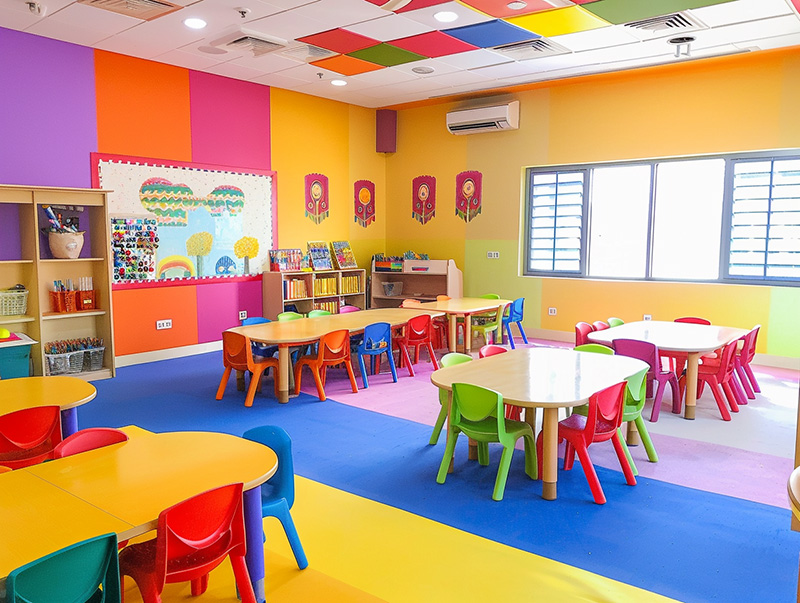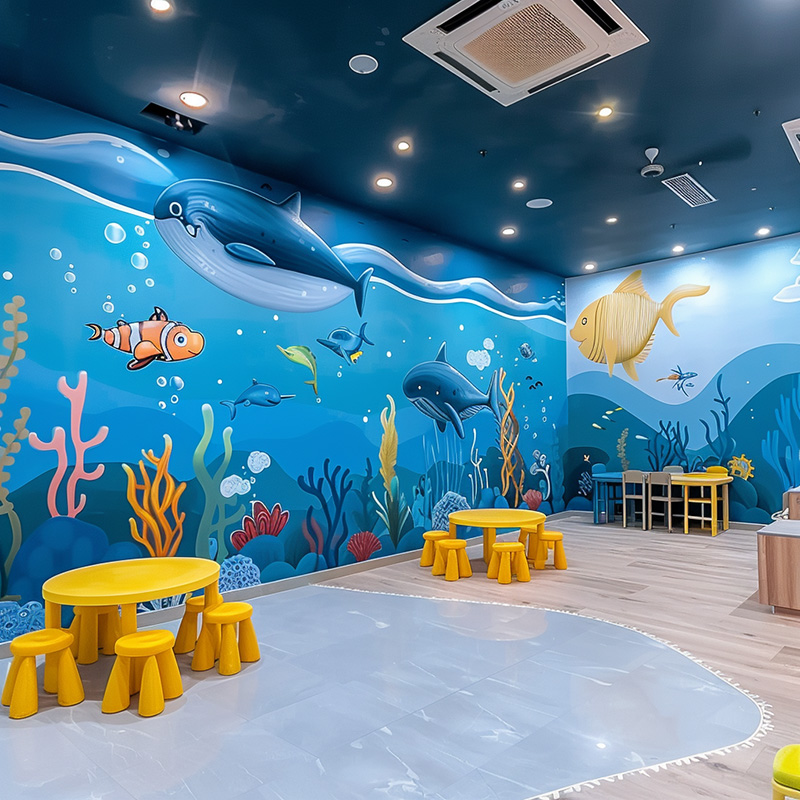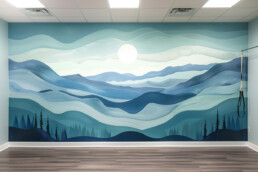In the enchanting world of early childhood education, every hue and shade holds the power to shape tiny minds and ignite endless possibilities. Imagine a nursery adorned in a symphony of colors – a place where vibrant reds evoke energy, serene blues inspire calm, and sunny yellows spark creativity. This isn’t merely decoration; it’s a carefully crafted canvas designed to enhance learning experiences and nurture young souls. Dive into the realm of color psychology nurseries, where the interplay of hues goes beyond aesthetics, influencing Dubai educational environments and beyond. From stimulating cognitive development to fostering emotional well-being, the impact of bright and vibrant colors in these hallowed spaces is profound. Join us on a journey through the lens of color impact as we unravel the secrets behind creating nurturing and inspiring nursery settings that lay the foundation for a lifetime of learning.
 Serenity in Blue: Fostering Calm and Focus
Serenity in Blue: Fostering Calm and Focus
When it comes to creating a serene and focused environment in nurseries, the color blue takes center stage. Blue has long been associated with tranquility and relaxation, making it an ideal choice for nursery settings. Its calming effect can help soothe restless minds and promote a sense of peace.
In Dubai educational environments, where children are constantly exposed to stimuli, incorporating shades of blue can provide a much-needed respite. Research has shown that blue can lower heart rate and blood pressure, reducing stress levels in both children and adults. By surrounding young learners with this serene color, we create an atmosphere conducive to concentration and mental clarity.
However, it’s important to strike the right balance when using blue in nurseries. Too much of this color can lead to feelings of sadness or melancholy. Therefore, it’s recommended to pair blue with warmer tones or accents of other vibrant colors to create a harmonious space that promotes both calmness and engagement.
Creativity Unleashed: The Influence of Sunny Yellows
Yellow is often associated with happiness, energy, and creativity – qualities that are essential for early childhood development. When used in nursery settings, sunny yellows can ignite young imaginations and inspire curiosity.
In Dubai educational environments, where innovation is highly valued, incorporating vibrant yellow hues into nursery design can stimulate cognitive development. Yellow has been found to enhance focus and attention span while also promoting positive emotions. It can create an atmosphere of optimism and enthusiasm that encourages exploration and learning.
However, it’s important not to overdo it with yellow as excessive exposure may lead to restlessness or agitation. To strike the right balance, consider using yellow as an accent color or pairing it with softer shades like pastel greens or blues. This combination will create a nurturing environment that fosters both creativity and tranquility.
The Soothing Touch of Greens: Promoting Relaxation and Harmony
Green, the color of nature, has a soothing and harmonizing effect on the human mind. In nursery settings, shades of green can create a sense of balance and tranquility, providing young learners with a connection to the natural world.
In Dubai educational environments, where children may be surrounded by concrete jungles, incorporating green into nurseries can help create a peaceful oasis. Research has shown that exposure to greenery can reduce anxiety and improve overall well-being. It can also enhance concentration and promote a sense of harmony.
When using green in nursery design, consider opting for softer shades like mint or sage to create a calming atmosphere. Pairing green with neutral tones or pops of complementary colors like yellow or pink can add visual interest while maintaining a sense of serenity.
Pink Perfection: Cultivating Affection and Compassion
Pink is often associated with love, affection, and compassion – qualities that are crucial for nurturing young hearts in nursery settings. Incorporating shades of pink into nurseries can create an atmosphere of warmth and tenderness.
In Dubai educational environments, where emotional intelligence is highly valued, pink can play a significant role in fostering empathy and kindness among young learners. Research suggests that exposure to pink can have a calming effect on aggressive behavior while also promoting feelings of affection and compassion.
When using pink in nursery design, it’s important to strike the right balance between softness and vibrancy. Too much pink may lead to feelings of overstimulation or passivity. Consider pairing pink with neutral tones like gray or beige to create a balanced space that promotes emotional well-being.
Color Combinations for Optimal Learning Environments
While individual colors have their own psychological impact, the magic truly happens when they come together in harmonious combinations. By carefully selecting color palettes for nursery settings, we can create optimal learning environments that cater to the diverse needs of young learners.
In Dubai educational environments, where cultural diversity is celebrated, incorporating a variety of color combinations can enhance inclusivity and engagement. For example, pairing blue with yellow can create a balanced space that promotes both calmness and creativity. Similarly, combining green with pink can foster a sense of harmony and emotional well-being.
When choosing color combinations for nurseries, it’s important to consider the overall theme or desired atmosphere. Whether it’s a vibrant and energetic space or a serene and peaceful sanctuary, each color combination should be thoughtfully curated to support the specific goals of early childhood education.
Implementing Color Psychology in Nursery Design Beyond Dubai
The impact of bright and vibrant colors in nursery settings extends far beyond Dubai educational environments. Color psychology nurseries are gaining recognition worldwide as educators and parents recognize the profound influence of colors on children’s moods and learning abilities.
Whether it’s creating a calming environment with blues or fostering creativity with yellows, understanding the psychological impact of colors allows us to design nurseries that optimize early childhood development. By harnessing the power of color psychology, we can create nurturing and inspiring spaces that lay the foundation for a lifetime of learning.
In conclusion, the impact of bright and vibrant colors in nursery settings cannot be underestimated. From promoting calmness and focus to fostering creativity and compassion, each color plays a unique role in shaping young minds. By implementing color psychology nurseries beyond Dubai educational environments, we can create inclusive and engaging spaces that nurture the holistic development of our future generations.
Related Posts
13 avril 2024
Learning and Decor: Educational Themes for Inquisitive Minds
This blog post delves into the…





